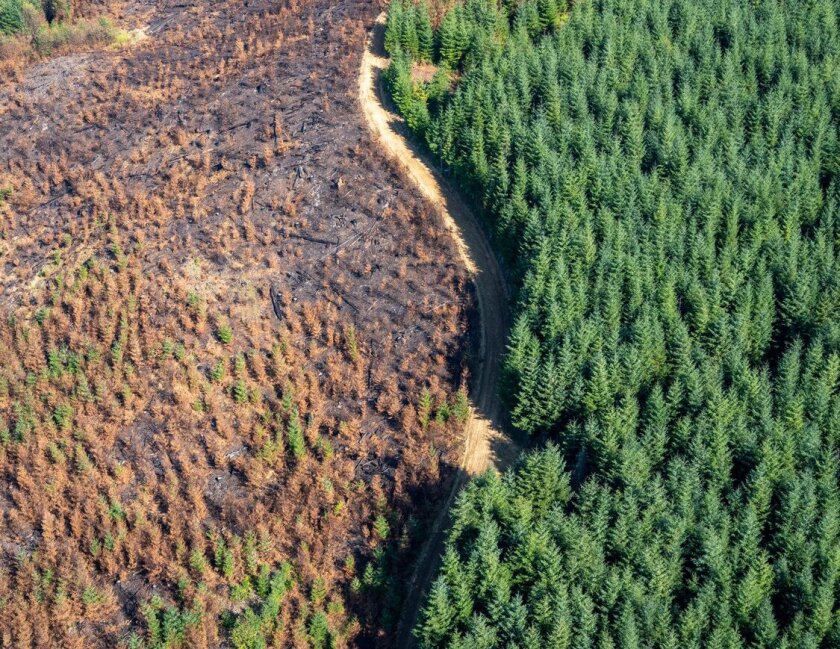Robert Verchick, a Loyola University environmental law professor, warned that as fellow task force members continue to review the plan in January, in advance of a Feb. 1 deadline for its approval, they will be faced with objecting to specific pieces that they don't think will work in the complex plan and then having to decide whether to vote for a plan that clearly won't meet Edwards' mandate.
"If I think this plan won't reach net zero, am I to vote against everything in the plan?" he asked.
In October, the task force was told that computer modeling found its emissions reduction strategies would cut Louisiana carbon-equivalent emissions dramatically, from the 217 million metric tons in 2018, but still leave the state producing 91.1 million tons a year by 2050.
The task force will meet twice in January to complete work on the plan. Several members suggested extending the time for considering amendments beyond Feb. 1. Harry Vorhoff, deputy director of the Governor's Office of Coastal Activities, said changing the deadline would be up to Edwards.
But delaying the report also would delay related legislation to be considered during the 2022 session of the Legislature, which convenes March 14, and approval of new regulations by state agencies and the Public Service Commission through rulemaking processes that could take a year or longer. Further, it might jeopardize Louisiana's chances of obtaining some of the billions of dollars in federal money that Washington might give states to reduce carbon emissions.
The task force's recommendations could very well have dramatic implications on the environment, including Louisiana's fragile coast, and reshape the state's entire economy. Its current strategy and action categories include:
— Clean energy transition, aimed at reshaping the way electricity is generated and transmitted across the state. This could require that all electricity be generated by either renewable or "clean" resources by 2035, with at least 80 percent from renewable resources, including wind and solar energy. That would include a goal of creating as much as 5 gigawatts of offshore wind power generation by 2035. The state's regulated utilities produce a total of only 6.9 gigawatts of electricity today, according to the U.S. Energy Information Administration.
— Industrial decarbonization, meaning the replacement of carbon-emitting energy use in industry, which now is responsible for 62 percent of the state's carbon emissions. The plan calls for capturing carbon dioxide from heat sources and injecting it deep underground into saline aquifers.
— Managing methane emissions, by decommissioning the tens of thousands of little-used or abandoned oil and gas wells across the state and by increasing the monitoring and regulation of methane emissions from active oil and gas production sites and from industry.
— Transportation, development and the built environment, which includes accelerating the adoption and accessibility of both electric and "clean" fuel vehicles and the fuels needed to run them; expanding broadband internet access to encourage telecommuting and discourage driving; adopting land use rules that reduce sprawl; and improving the energy efficiency and resilience of buildings. This strategy would include minimum energy performance standards for industry and businesses, and installing 250 electric charging stations per 100,000 residents across the state by 2050.
— Natural and working lands and wetlands, including preserving and expanding natural lands and urban green spaces to capture carbon, restoring the state's coastal wetlands as carbon sinks and managing agricultural and forestry land to act as carbon sinks.
— Inclusive, low-carbon economy, a catch-all category that includes ensuring the economic changes resulting from carbon reductions don't affect historically marginalized groups, and assuring the workforce is prepared for new jobs resulting from the changes. It also includes prioritizing Louisiana workers and businesses in the transition to a low-carbon economy.
— Collaboration and partnerships to ensure successful implementation, includes positioning the state and local governments to maximize federal funding opportunities, aligning climate actions across state agencies and coordinating with other states and regions, while also calling on the private sector to participate in climate actions. This strategy also includes engagement with both disadvantaged communities and indigenous peoples.
— Accountability and adaptability to ensure lasting success, includes development of siting and permitting processes that are equitable, efficient and sustainable to for new energy and infrastructure projects; ensuring the state plan is implemented effectively and transparently; and creating a public method to track the success or failure in meeting greenhouse gas emissions reductions goals.
Several task force members questioned the plan's inclusion of tax breaks to collect CO2 at emission sources and inject it deep underground instead of releasing it into the atmosphere. Verchick said doubts about that technology's viability is on the same level as doubts raised in the report about developing zero-carbon electrification technology in the state, and said any tax breaks should be available for either technology.
Task force member Collette Pichon-Battle of the Gulf Coast Center for Law and Policy urged that the summary of the plan's main goals be rewritten to make clear a major goal is to improve Black and low-income communities, especially those now living near the biggest carbon-polluting industries and where new petrochemical facilities are proposed.
"The siting of the current industrial buildout is 80 times more likely to be in Black communities and 100 times more likely to be in poor communities," Pichon-Battle said.
"The benefit to Louisiana's people is not just the GDP of the state. It's not just the economic benefit of private business," she said. "It's the health and wellness and longevity, the ability to live a good life, of the people of the state."
Vorhoff said each section of the plan now includes language calling for any actions to take into account their effects on such communities.
(c)2021 The Times-Picayune | The New Orleans Advocate Distributed by Tribune Content Agency, LLC.








